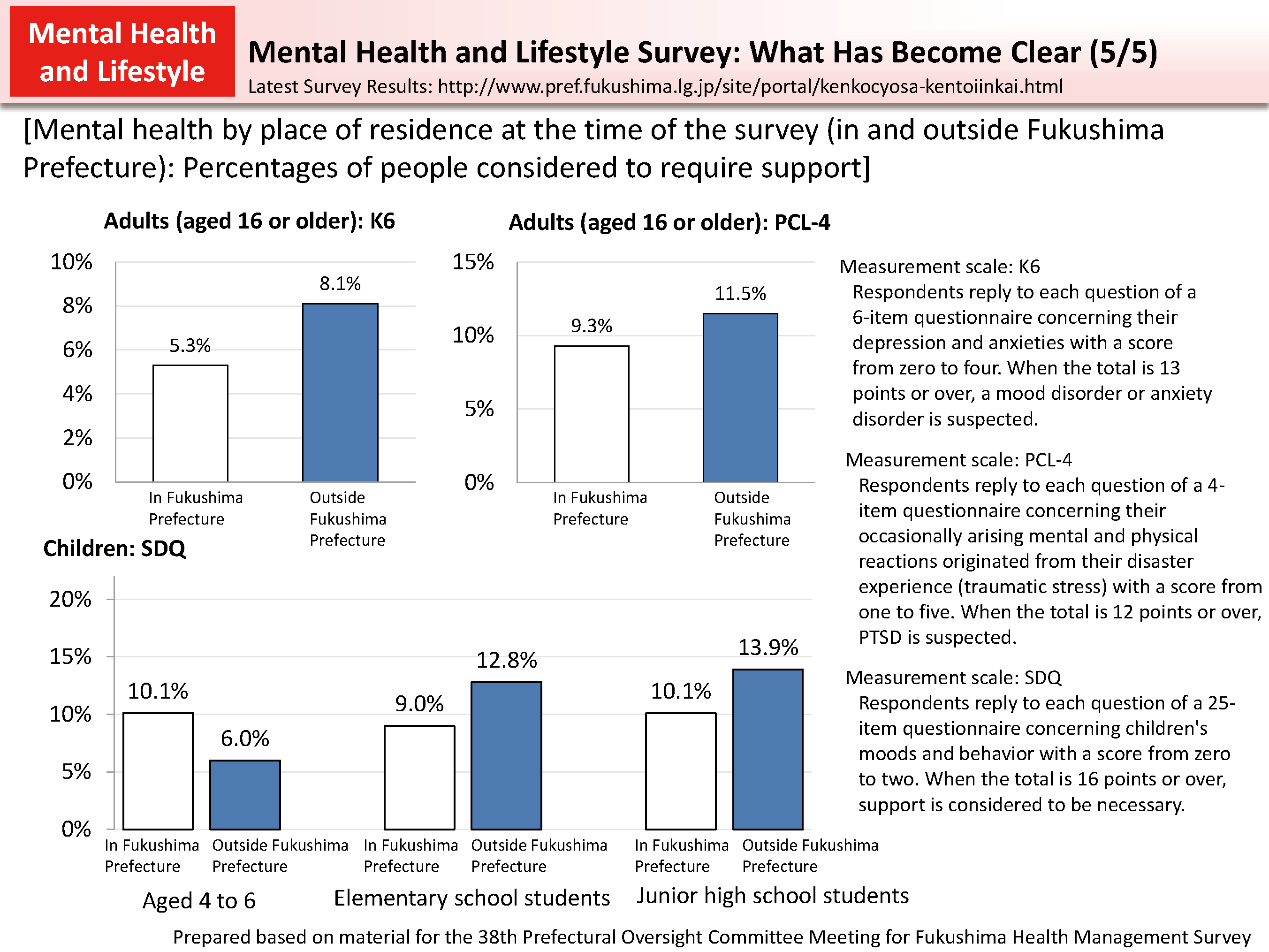Mental Health and Lifestyle Survey: What Has Become Clear (5/5)
- Included in this reference material on March 31, 2019
- Updated on March 31, 2021
Respondents to the survey for FY2018 were classified by their places of residence into those who resided in Fukushima Prefecture and those who resided outside Fukushima Prefecture at the time of the relevant survey, and a comparison was made concerning their mental health conditions using measurement scales, K6, PCL-4, and SDQ. As a result, the percentage of people considered to require support based on the K6 scale among adults (aged 16 or over) tends to be higher for those outside Fukushima Prefecture than those in Fukushima Prefecture. Compared with the relevant percentage (3.0%) in a prior study in Japan (Kawakami, 2007), the percentage for those in Fukushima Prefecture was approximately 1.8 times and that for those outside Fukushima Prefecture was approximately 2.7 times higher. In the same manner, the percentage of people considered to require support based on the PCL-4 scale among adults (aged 16 or over) tends to be higher for those outside Fukushima Prefecture than those in Fukushima Prefecture.
As for children, the percentage of those considered to require support based on the SDQ scale tends to be higher for those outside Fukushima Prefecture than those in Fukushima Prefecture among elementary school and junior high school students.
These results are considered to show higher stress among people who have temporarily moved from Fukushima Prefecture and lived under evacuation and suggests a further need for thorough and careful support.

